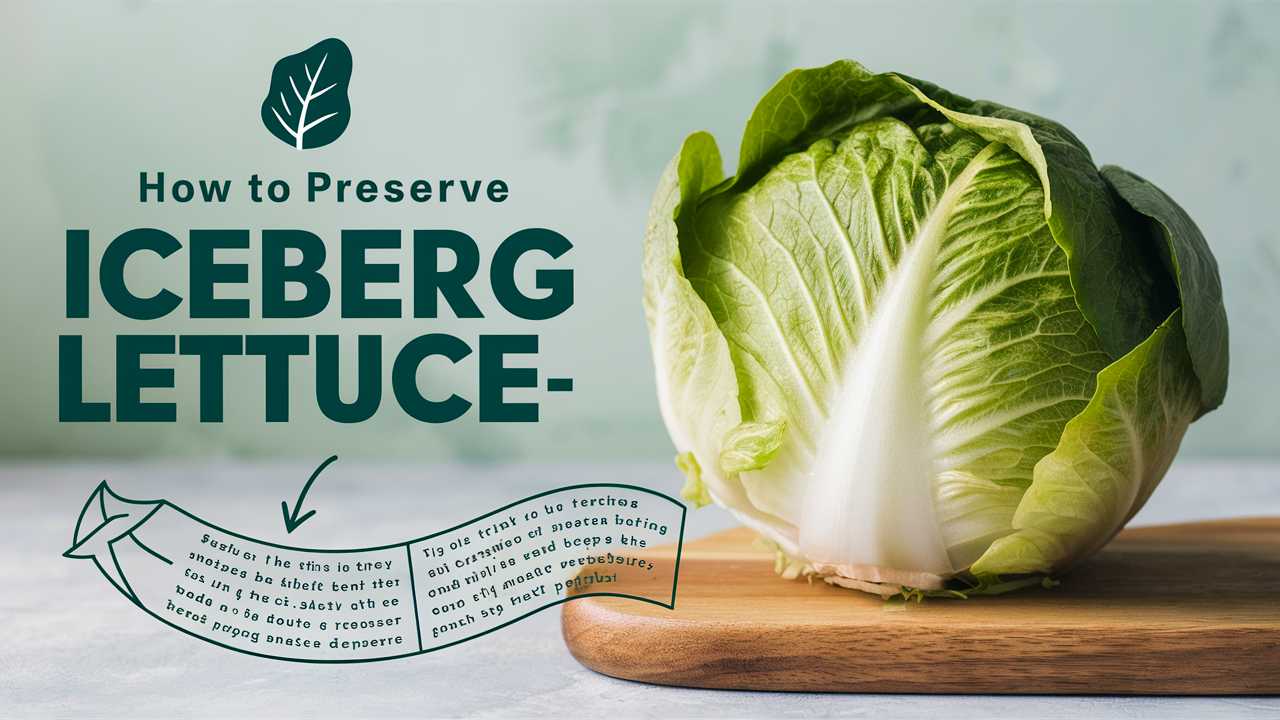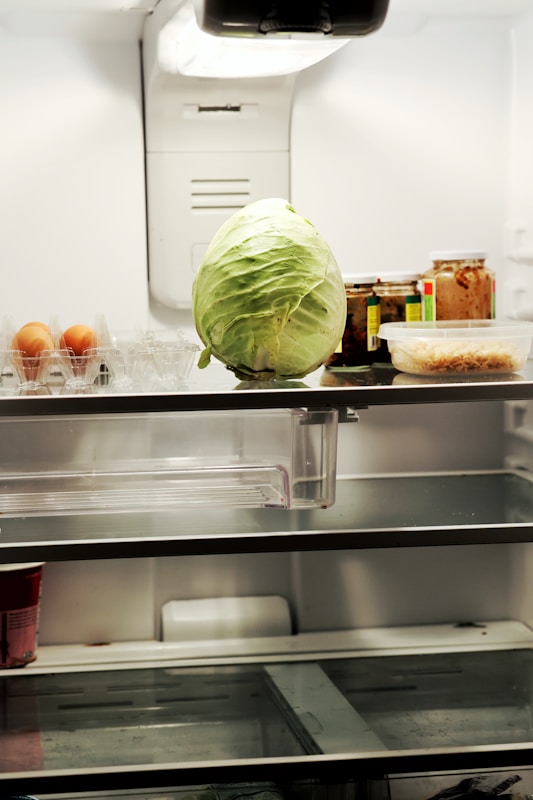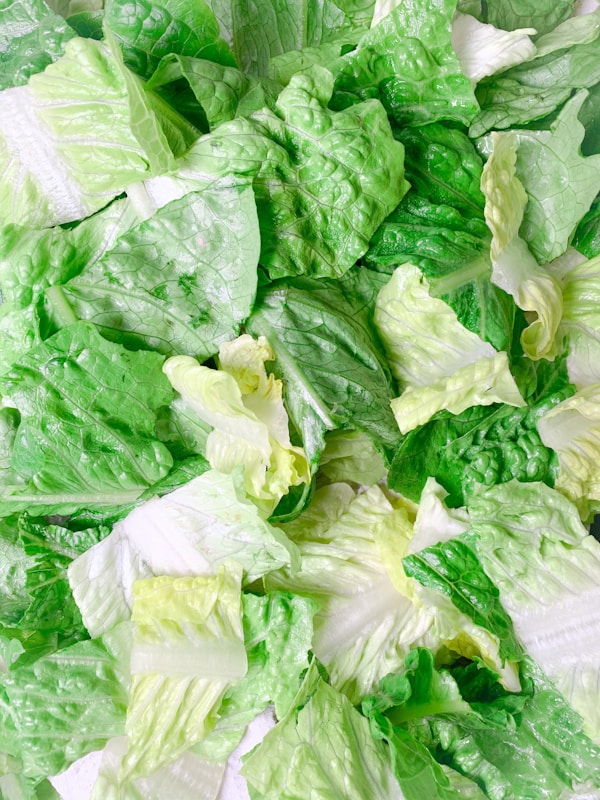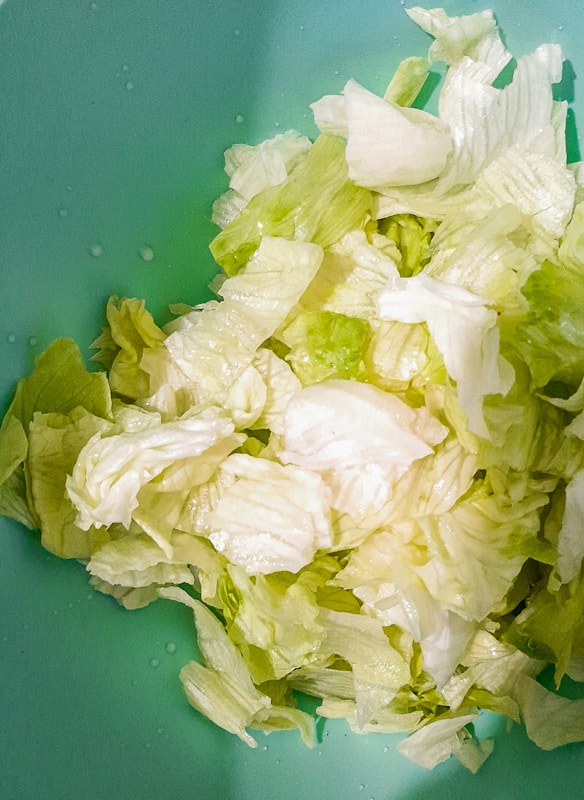This comprehensive guide will explore various preservation methods, offer tips for selecting the best lettuce, and share creative ways to use iceberg lettuce in your cooking.
Understanding Iceberg Lettuce: A Crisp Delight
Before we tackle the preservation methods, it’s essential to understand what makes iceberg lettuce unique. Known for its tightly packed, round head, iceberg lettuce has a mild flavor that complements a variety of dishes. Its high water content—about 95%—not only contributes to its signature crunch but also makes it vulnerable to spoilage. Learning about the characteristics of iceberg lettuce will help us understand why specific preservation techniques are necessary.
Methods of Preservation
Refrigeration: The First Line of Defense
Refrigeration remains the simplest and most effective method for keeping iceberg lettuce fresh. However, there are specific tips to enhance its longevity.
Preparing for the Fridge
Keep It Whole: If possible, store your iceberg lettuce whole rather than cutting it up. This helps retain moisture and keeps it fresher for longer.
Wrap It Up: After you purchase or harvest the iceberg lettuce, gently wash it under cold water to remove any dirt. Pat it dry with a towel to avoid moisture build-up, which can hasten spoilage. Once dry, wrap the head in a paper towel, then place it in a plastic bag or a perforated produce bag. The paper towel absorbs excess moisture while the plastic helps retain humidity, creating a balanced environment.
Temperature Matters
Maintaining the right refrigerator temperature is crucial. Ideally, your fridge should be set between 34°F and 40°F (1°C to 4°C). Placing the lettuce in the crisper drawer, where humidity levels are typically higher, can further extend its shelf life.
Freezing: A Last Resort
While iceberg lettuce isn’t ideal for freezing due to its high water content, there are instances where freezing can be beneficial—especially for cooked applications.
Preparing Lettuce for Freezing
If you find yourself with excess lettuce that you can’t consume in time, consider slicing it into smaller pieces and blanching it in boiling water for about 2-3 minutes. This process helps stop enzyme action that can affect flavor and color. Once blanched, immediately transfer the lettuce to an ice bath to halt the cooking process, then drain it thoroughly and let it dry.
Packaging for the Freezer
Once dry, pack the ice-cold lettuce into freezer-safe bags, squeezing out as much air as possible. Label the bags with the date, and store them flat in the freezer. Keep in mind that frozen iceberg lettuce is best used in cooked dishes like soups, stir-fries, or casseroles, where texture isn’t as critical.
Dehydrating: An Unconventional Approach

Though less common, dehydrating iceberg lettuce can be an interesting way to preserve it, especially if you’re looking to create homemade soups or salad mixes.
The Dehydration Process
Start by washing and thoroughly drying the lettuce. Tear the leaves into smaller pieces to facilitate even drying. Using a dehydrator or your oven set to the lowest temperature, spread the lettuce in a single layer and dehydrate until crispy. This process will usually take several hours, depending on your method.
Usage Ideas
Once completely dried, store the dehydrated lettuce in an airtight container away from light and heat. When you want to use it, rehydrate it in warm water or add it directly to dishes like soups or stews, where it will reabsorb moisture.
Fermentation: A Flavorful Twist
Fermentation can also be a fun way to preserve iceberg lettuce, especially for those who enjoy trying new flavors. This method adds probiotics, enhancing the health benefits of the lettuce.
Making Fermented Lettuce
Start with fresh iceberg lettuce, wash, and chop it into bite-sized pieces. In a large bowl, combine 1 tablespoon of salt with 4 cups of water to create a brine solution. Submerge the chopped lettuce in the brine, ensuring it’s fully covered. Use a weight to keep it submerged if you have one.
Let it sit at room temperature for about 1-2 days until you see bubbling, indicating fermentation. Taste it; once it’s sour enough for your preference, transfer it to the fridge to slow down the fermentation process. This fermented lettuce can be used in salads or as a tangy side dish.
Extending Shelf Life with Storage Techniques
Smart Storage Solutions
Besides refrigeration, proper storage techniques can significantly extend the freshness of your iceberg lettuce. Moisture control is crucial in any method employed.
Utilizing Produce Bags: Consider investing in reusable produce bags designed to control humidity. These bags can keep your lettuce fresher longer, reducing the need for single-use plastic bags.
Using a Salad Spinner: After washing your lettuce, using a salad spinner can help remove excess moisture. A dry lettuce leaves less chance for spoilage due to dampness.
Strategic Rotation
When using iceberg lettuce in your meals, consider employing a first-in, first-out system. Use older lettuce first to minimize waste and maintain freshness.
Culinary Applications: Get Creative
With your preserved iceberg lettuce ready to go, let’s explore some culinary options that highlight its crispiness and versatility.
Crisp Salads
One of the most obvious applications for iceberg lettuce is salads. A classic wedge salad topped with blue cheese dressing, crispy bacon, and cherry tomatoes shines with iceberg lettuce’s crunch.
Sandwiches and Wraps
Iceberg lettuce excels in sandwiches and wraps. It provides a satisfying crunch and freshness that can elevate even the simplest of fillings. Consider a chicken salad wrap with iceberg lettuce and creamy dressing for a delicious lunch option.
Stir-Fries and Soups
With its delicate flavor, iceberg lettuce can also be added to stir-fries or soups as a finishing touch. Toss in some chopped lettuce just before serving for a refreshing finish that adds texture.
Pickled Iceberg Lettuce
Create quick pickled lettuce by soaking strips of iceberg in vinegar, sugar, and spices for a few hours. This tangy twist can brighten up burgers or grilled meats.
Lettuce Cups
For a low-carb alternative to tacos, use large leaves of iceberg lettuce as cups. Fill them with sautéed shrimp, grilled veggies, or even a bean mixture for a delightful meal.
Troubleshooting Common Problems
Even with the best preservation practices, you may encounter issues with your iceberg lettuce. Here are some common problems and how to deal with them:
Wilting Leaves
If your iceberg lettuce starts to wilt, it’s often due to dehydration. Revive it by soaking the entire head in cold water for about 30 minutes. This can help plump it back up.
Browning Edges
Browning often indicates spoilage. While you can cut away the brown areas, if the lettuce is mostly brown or slimy, it’s best to discard it.
Unpleasant Odor
A strange or sour smell is a clear indicator that the lettuce has spoiled. It’s essential to check your lettuce regularly and trust your senses—if it smells off, toss it out.
Creating a Sustainable Kitchen
By focusing on preservation and proper storage of iceberg lettuce, you’ll not only reduce waste but also create a more sustainable kitchen. This conscious approach to food can lead to a more fulfilling cooking experience.
Mindful Consumption
Before purchasing iceberg lettuce or any produce, consider your recipe plans for the week. By understanding your culinary habits, you can avoid buying more than you need, which reduces food waste and saves money.
Composting
If you do find yourself with spoiled lettuce, consider composting it rather than throwing it in the trash. Composting enriches the soil and contributes to a more sustainable ecosystem.
Conclusion
Preserving iceberg lettuce may seem challenging, though it opens the door to an array of delicious dishes and creative culinary experiences. With knowledge of proper storage techniques, adventurous cooking methods, and mindful consumption, you can enjoy the crunch of iceberg lettuce long after bringing it home from the market. By embracing the full potential of this versatile vegetable, you contribute to a more sustainable kitchen and a healthier lifestyle.









